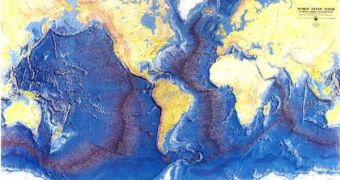Wouter Schellart, a geoscientist at the Monash University, in Victoria, Australia, led a team of researchers that managed to discover that a stretch of land existed between New Zealand and New Caledonia, one which bound the two regions together, millions of years ago. In the meantime, the land submerged and eventually collapsed, between 50 and 20 million years ago. The event that triggered this change was of cataclysmic proportions, the researchers added.
According to a computer model that Schellart and his team put together, the Australian and New Zealand tectonic plates collided violently against each other, forcing the stretch of ocean floor that used to connect the two islands some 1,100 kilometers into the Earth's mantle, one of the deepest levels ever achieved by a single subduction process in history. Thus, where the connection once stood, a chain of volcanic islands appeared on the surface, being the only thing that remained of the once-extended region.
“Until now many geologists have only looked at New Caledonia and New Zealand separately and didn't see a connection. In our new reconstruction, which looked at a much larger region including eastern Australia, New Zealand, Fiji, Vanuatu, New Caledonia and New Guinea, we saw a large number of similarities between New Caledonia and northern New Zealand in terms of geology, structure, volcanism and timing of geological events,” the researcher said.
“We then searched deep within the Earth for proof of a connection and found the evidence 1100 km below the Tasman Sea in the form of a subducted tectonic plate. We combined reconstructions of the tectonic plates that cover the Earth's surface with seismic tomography, a technique that allows one to look deep into the Earth's interior using seismic waves that travel through the Earth's interior to map different regions,” he added. The findings are detailed in the important scientific journal Earth and Planetary Science Letters.
“We are now able to say a tectonic plate about 70 kilometers thick, some 2500 km long and 700 km wide was subducted into the Earth's interior. The discovery means there was a geographical connection between New Caledonia and New Zealand between 50 and 20 million years ago by a long chain of volcanic islands. This could be important for the migration of certain plant and animal species at that time,” Schellart explained.

 14 DAY TRIAL //
14 DAY TRIAL //